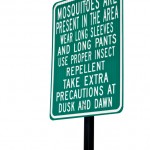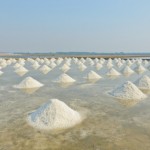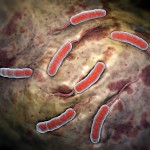We came home from a short trip to Texas and I realized my weekly copy of JAMA had four articles on West Nile disease, its complications and possible prevention. After several years of relative quiescence, West Nile was back with a vengeance in 2012. Between the original New York City outbreak in 1999 and 2010 the virus has been endemic in the United States with intermittent flares, overall infecting an estimated three million Americans, causing West Nile fever (WNF) in 780,000, the much more severe West Nile neuroinvasive disease (WNND: e.g., involving the brain and other portions of the nervous system) in 16,196 and killing 1549 of those.
Until 1999, the West Nile virus lived, mostly in birds, in Africa, Europe and Asia, but was not known to be in the Western Hemisphere. Its hosts (reservoirs) were bitten by mosquitoes whose name comes from the Spanish or Portuguese for "little fly," but some think this insect is the most dangerous creature on earth as it also transmits malaria, yellow fever and a variety of encephalitis-causing illnesses (inflammation of the brain). The mosquito in turn can pass the virus on to another bird or to a human
A 2001 article in the New England Journal of Medicine reviewed the original Western Hemisphere outbreak, the 1999 epidemic in New York City. It began with two patients hospitalized for encephalitis in the New York City borough of Queens. A preliminary epidemiologic search of nearby hospital admissions revealed six more cases. All eight lived in a sixteen square mile area in northern Queens and all had participated in evening outdoor activities (e.g., working in their gardens).
A search of their environments showed breeding sites for the particular species of mosquitoes known to carry St. Louis encephalitis (its vector), so the mini-epidemic was presumed to be an arthropod-bourne disease (The term arthropod include insects, spiders and crustaceans such as lobsters and crabs.) Mosquito control measures were promptly begun.
Eventually fifty-nine New Yorkers were hospitalized in August and September of that year with this outbreak. Although their ages varied from 5 to 90, the median age of these severely ill patients was 71 (NB. The "mean" is the "average" you're used to, where you add up all the numbers and then divide by the number of numbers. The "median" is the "middle" value in the list of numbers, so in this case there were as many patents over 71 and under that age).
The overall attack rate of West Nile in this outbreak went sharply up with age. Nearly two-thirds of those affected had encephalitis with altered mental status along with fever and abnormalities in their cerebrospinal fluid (CSF, the fluid that cushions the brain and spinal cord, bring it nutrients and removes waste products). Some of those had moderate to severe muscle weakness and/or meningitis (inflammation of the membranes that cover the brain and spinal cord) with fever, abnormal CSF findings, headache and stiff neck symptoms.
Seven of the fifty-nine (12%) of those with the disease died and those over age 75 were especially prone to death in this epidemic. Diabetes was another risk factor for mortality.
At the same time, there was a seemingly unrelated fatal illness occurring in the area's birds, especially in crows. The connection initially was missed as St. Louis encephalitis doesn't usually kill off its avian reservoir hosts.
Eventually the West Nile virus was identified in tissue specimens taken from both crows and a Chilean flamingo that had died at a zoo in the vicinity.
Within five years the virus had spread to all forty-eight contiguous states and several provinces in Canada. There were major flares of WNF and WNND in 2002 and 2003 with almost 3,000 cases of WNND in those years.
Then things calmed down and, as is typical, the money available for mosquito control became less abundant. The disease spread to Argentina by 2005 and eventually to most of the Western Hemisphere countries. Strangely only the United States (and Canada) suffered major epidemics.
And then came 2012.
Dallas County had a population of nearly two and a half million humans; of those 255 developed WNF, another 173 got WNND and 19 of those died. The review article, published in the July 17, 2013 edition of JAMA, states there was "An usually rapid and early escalation of human cases (which) followed infection trends in mosquitoes."
As in the rest of the country, Dallas had experienced a considerably warmer than usual winter. Ever since 1966, when aerial spraying for mosquitoes was instituted for an epidemic of St. Louis encephalitis, researchers in the metropolitan area had a heightened awareness of arthropod-bourne disease. Blood studies of residents in a Dallas area prone to flooding had shown there had been recurring epidemics of related virus-caused illness.
As West Nile virus supplanted its predecessor, Dallas began to experience cases of WNND and to prepare for its flares. In May 2012 a mosquito trap yielded evidence of West Nile-infected insects and all area physicians were sent a recommendation to test patents with symptoms of potential WNND for the virus.
A "vector index" was developed and calculated weekly; the specific of the math doesn't matter, but it related to how many of the particular mosquito species which was the region's primary carrier of West Nile virus, Culex quinquefasciatus, were found and their infection rate. Human cases of WNND were noted to follow the vector index peaks by one to four weeks.
An 8-day aerial spraying of insecticide did not lead to an increase in emergency room visits for asthma or other respiratory problems, or, for that matter, to skin rashes.
As of today I'm unaware of any human vaccine for West Nile or any treatment for the disease other than supportive measures.
So what can we do to prevent WNF or WNDD?
At present our only method is to control the mosquito population and avoid being bitten. I decided to change the drinking water we put out for the birds we feed and any dog water that's outside every other day. And we don't garden in the evening.
I'll mention one other, low-tech preventive measure in my next post.









